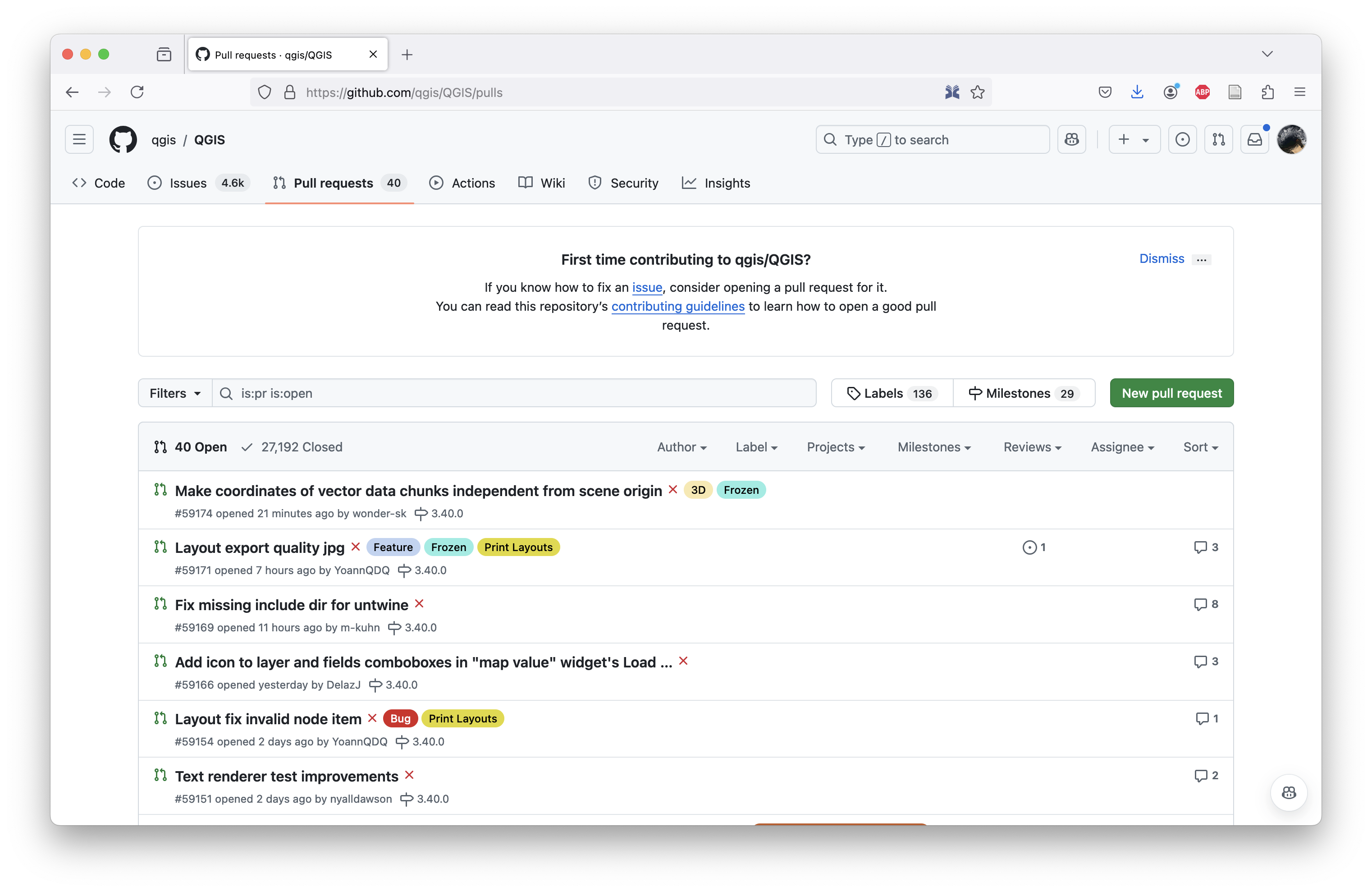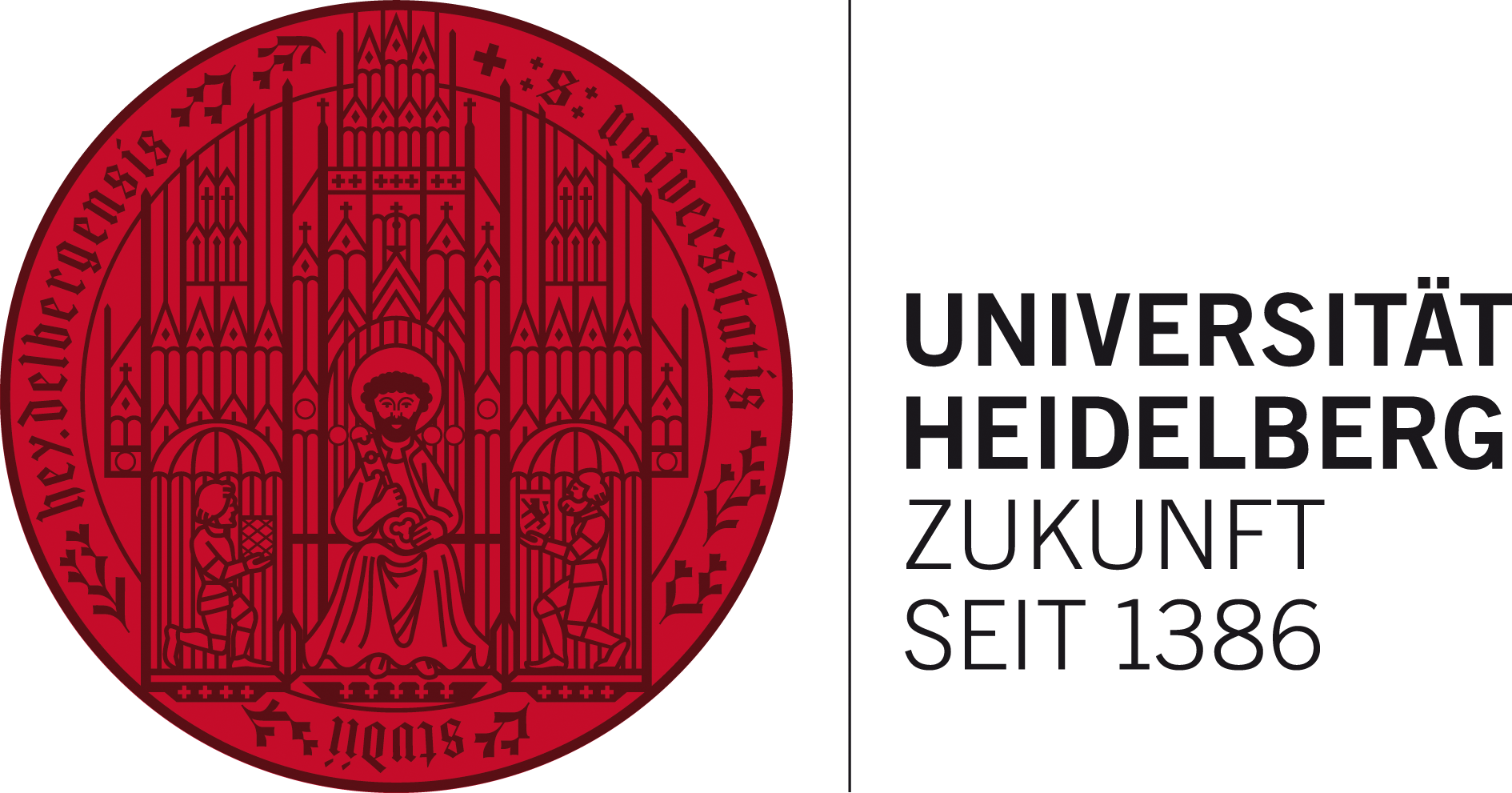Introduction#
Why are we using git in this course?#
Version control using git is the backbone of all free and open source software projects. Without it we wouldn’t have QGIS or any other FOSSGIS software, because we would not be able to collaborate on code, track changes, or share our work with others.
Besides, it is an essential tool not just for software developers but also for data scientist and researchers. Data analyses are getting increasingly complex which requires you to keep your scripts, models and documentation in order and track your progress.
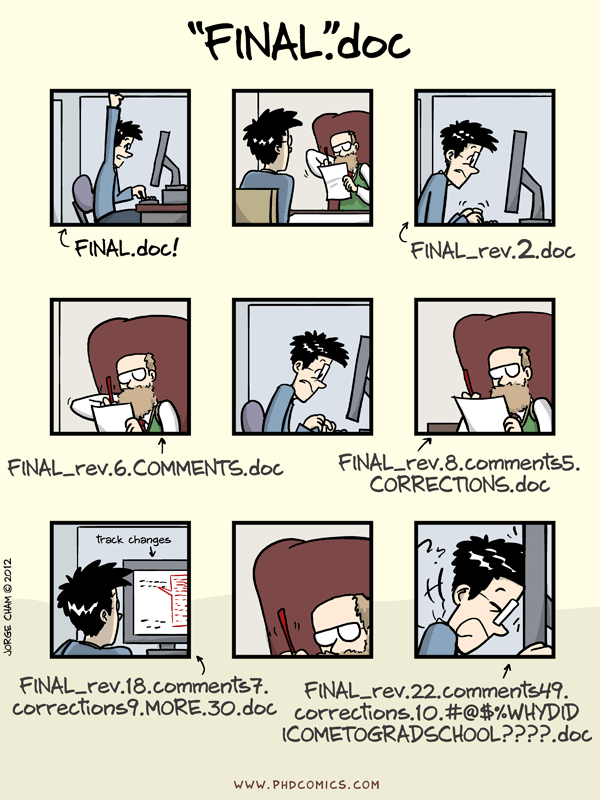
This is also one of the measures researchers can take to avoid this from happening to you. This is one of the Best Practices for Scientific Computing. You can learn more of this in the Advanced Geoscripting seminar.
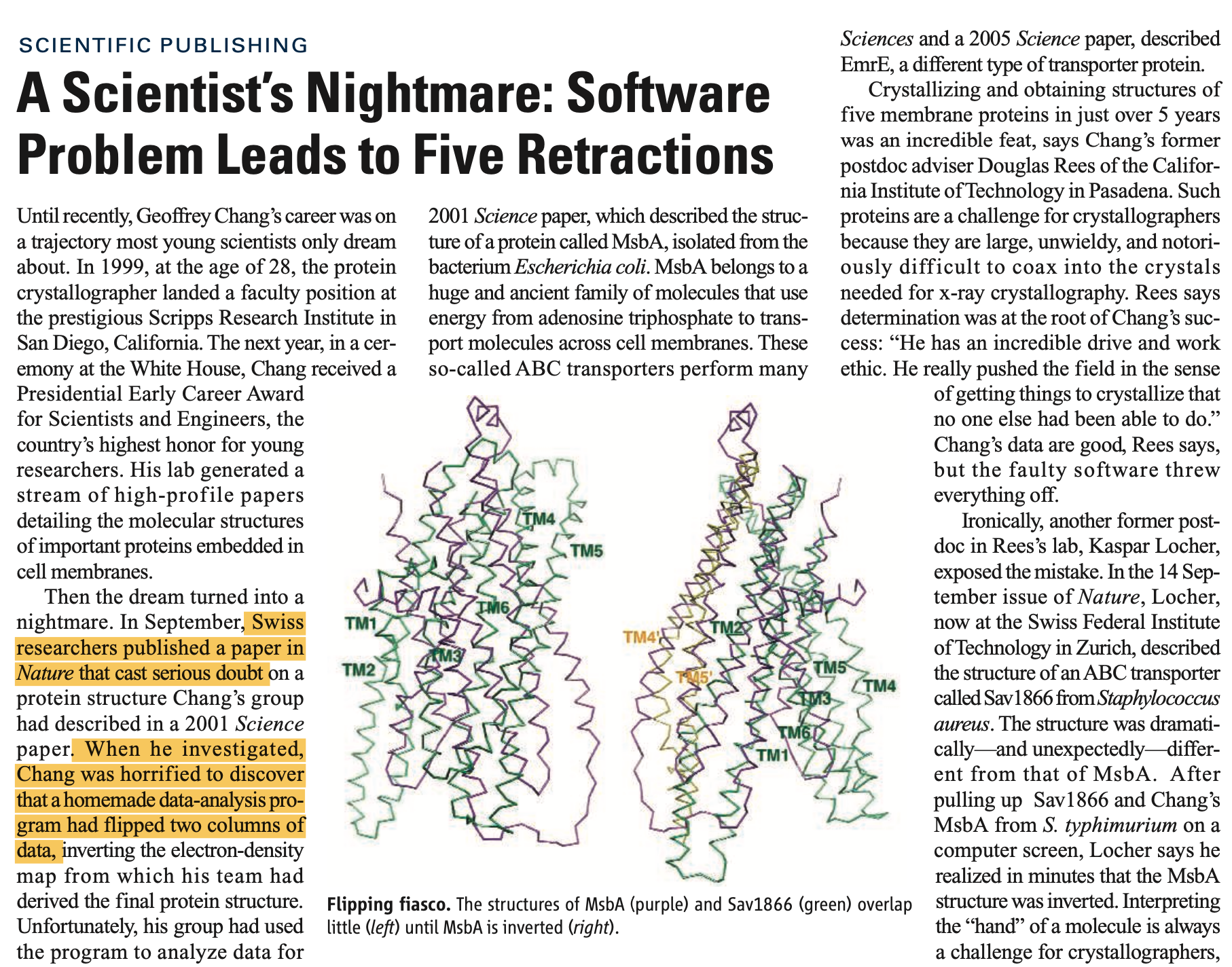
What is git?#
git is a version control system: a software that tracks the file changes of all contributors within a project. It was originally developed to assist collaborative open source software development by Linus Torvalds, the initiator of Linux development. Watch the video below for a short explanation of the concept of git.
How can you use git?#
git is a software that you can install on your computer (see software setup)
git is usually run using the command line, but there are also graphical user interfaces available. In the course, we will use it via the command line.
Open a terminal (or git shell on windows) and type git to see if it is installed on your computer.
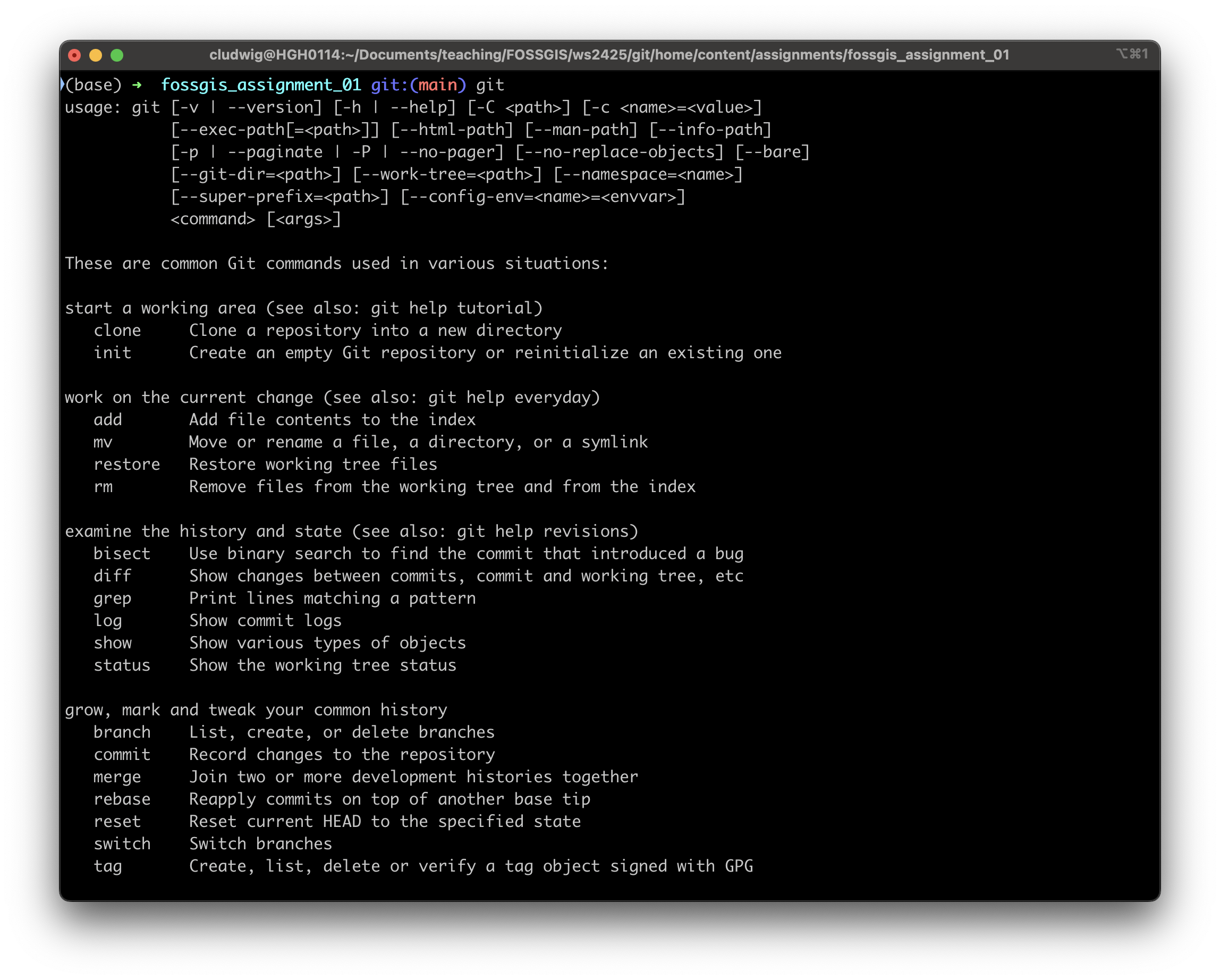
What is a git repository?#
A repository is a folder that is being tracked by git. It contains all the files and directories of your project.
Type git status in the command line to see if you are in a git repository. If git tells you:
$ git status

If the folder you are in is not a git repository, you will get this message:

What is GitLab, GitHub, etc.?#
You can share your git repository with others by uploading it to an online git platform such as GitHub or GitLab.
Local repository vs. remote/central repository#
The repository on your computer is called ‘local repository’ and the one on the online platform (e.g. GitHub, GitLab) is called ‘remote or central repository’.
You can sync them using the commands
git pushto upload changes from the local repo to central repo andgit pullto download changes from the central/remoce repo to local repo.
GitHub#
GitHub (https://github.com) is the most prominent platform for open source software development where you will also find popular FOSSGIS projects such as QGIS.
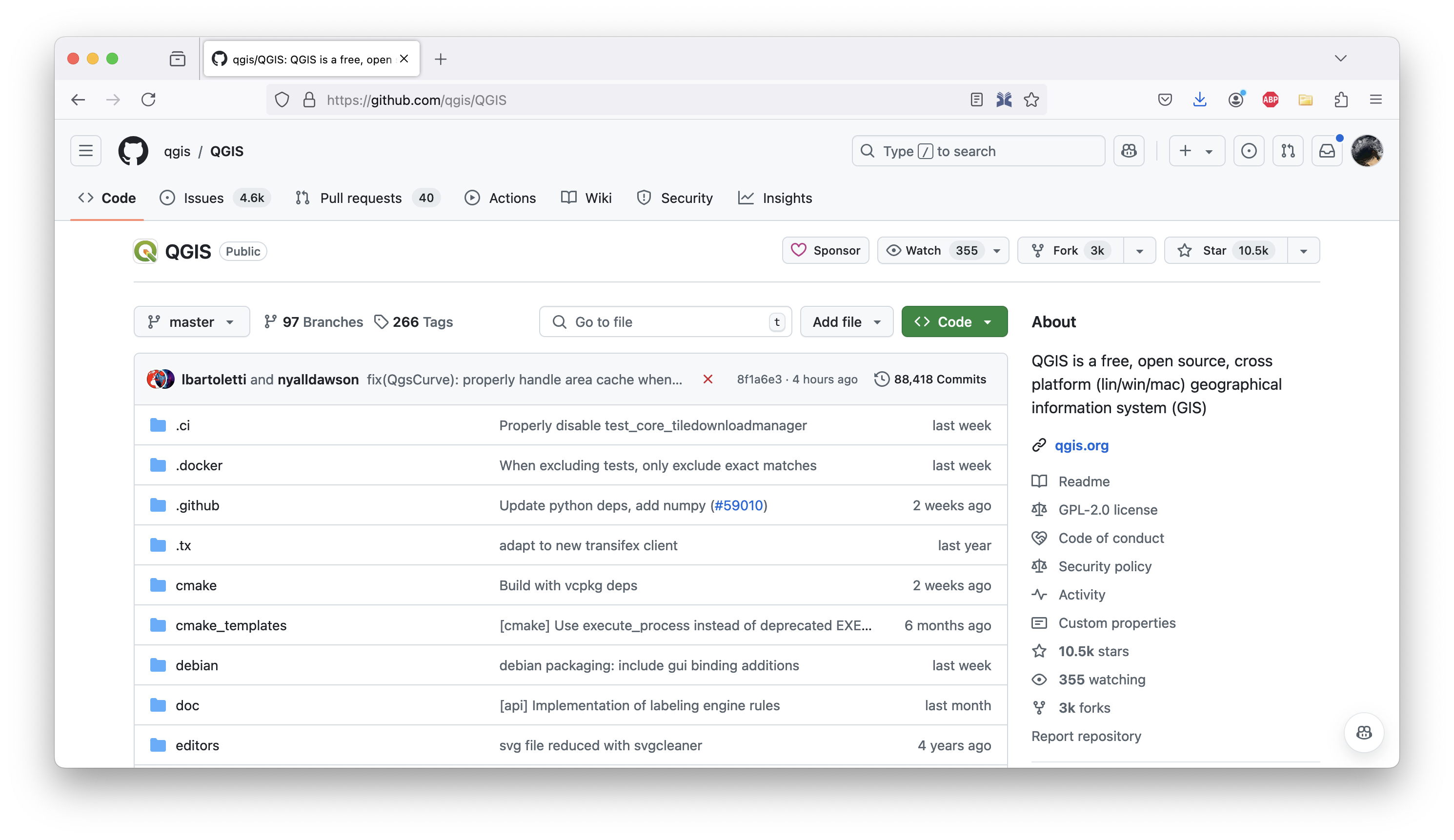
GitLab#
In this course, we will use a GitLab server hosted by Heidelberg University. You will find all repositories for this course here. For example, below you can see the git repository containing the material for the first assignment which is available at https://courses.gistools.geog.uni-heidelberg.de/fossgis/fossgis_assignment_01
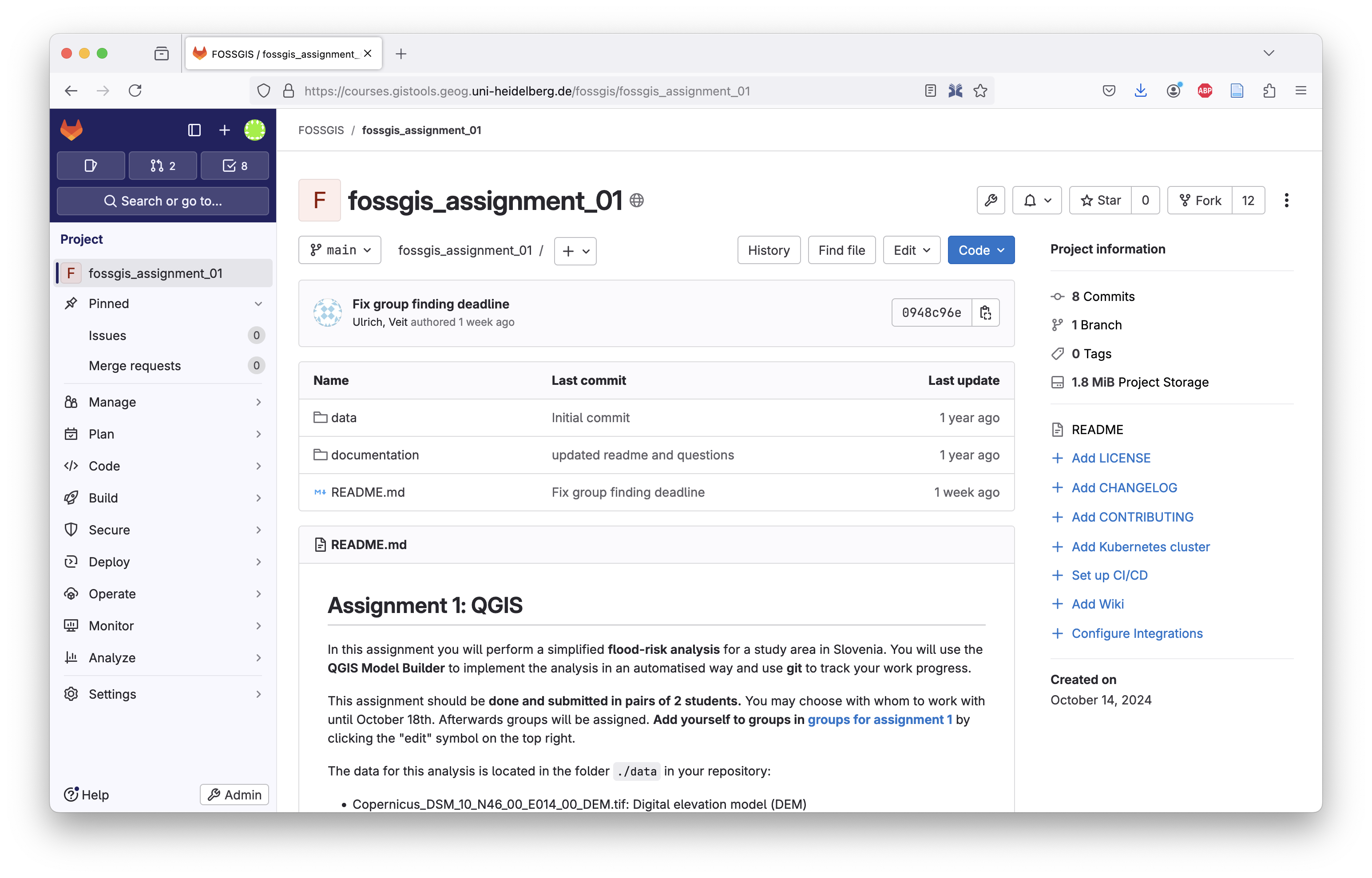
Issues#
You can report a bug in a software by creating an issue on the respective repository on GitHub. For example, here you can find all open issues from QGIS.
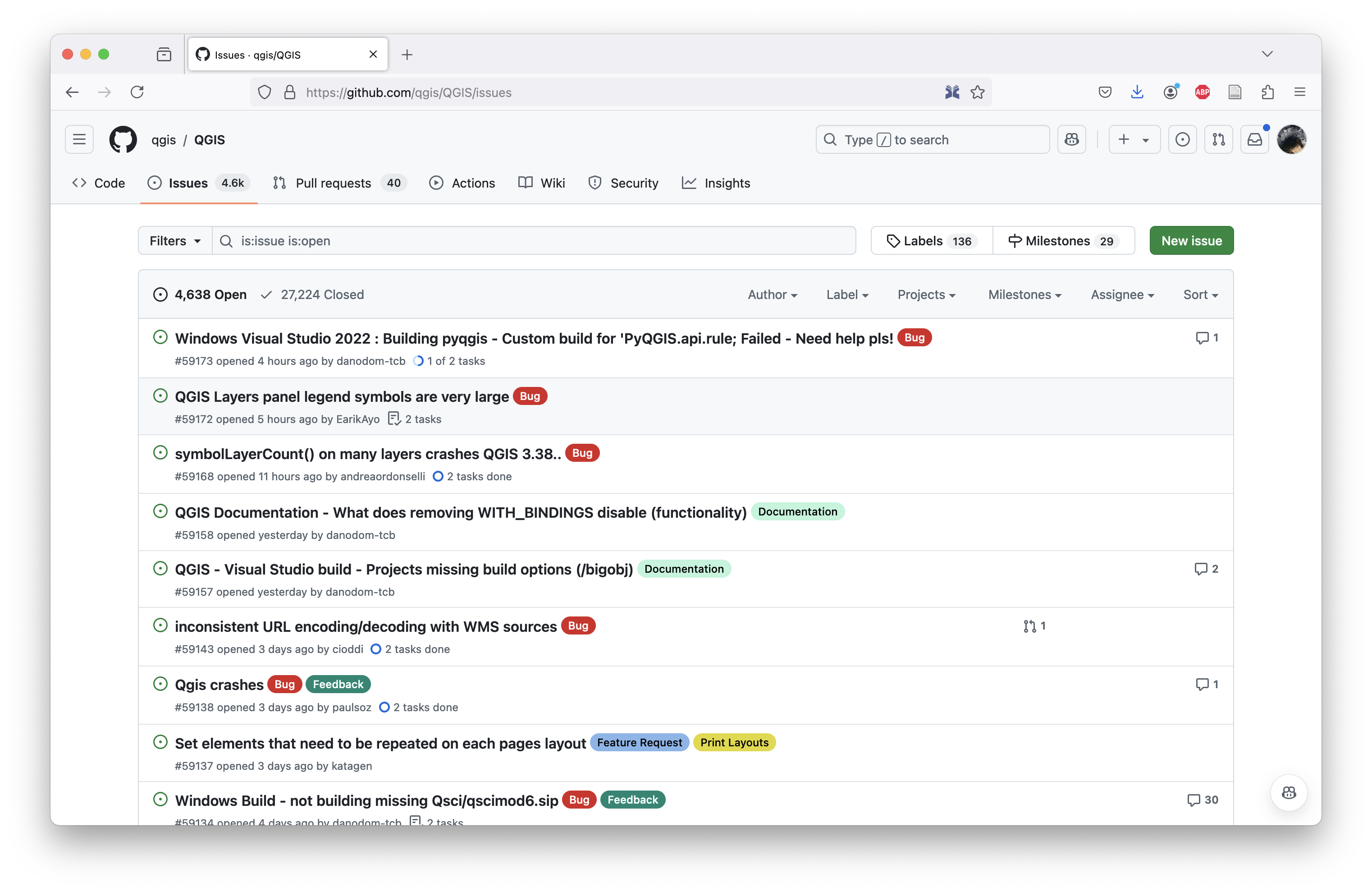
Issues can also be created on GitLab. In this course, you should use issues to report any problems or questions that you have with your software setup, assignments or other questions that you would usually post on a Moodle forum.
Pull Requests (GitHub) or Merge Requests (GitLab)#
Developers can contribute their improvements of the source code back to the project through pull requests (on GitHub) or merge request (on GitLab). It is the same thing, just different names. Before the changes can be merged into the source code, the pull requests need to be reviewed and approved by other developers. Here are all open pull requests for QGIS for example.
